#Tantric practices and insights
Explore tagged Tumblr posts
Text
Unveiling the Belief System of Sanatana Dharma: A Tapestry of Spirituality and Cosmic Harmony
Embark on a journey through the heart of Sanatana Dharma's belief system, where cosmic harmony, diverse deities, and timeless truths converge. Discover the tapestry of spirituality that weaves through Hindu scriptures and Tantras. 🌌🕉️ #BeliefSystemHindu
Introduction: Sanatana Dharma, often referred to as Hinduism, is more than a religion; it’s a way of life that embraces a diverse array of philosophies, beliefs, and practices. In this article, we embark on an exploratory journey through the annals of Hindu scriptures, puranas, vedas, and other texts, to unravel the intricate and profound belief system that forms the foundation of Sanatana…
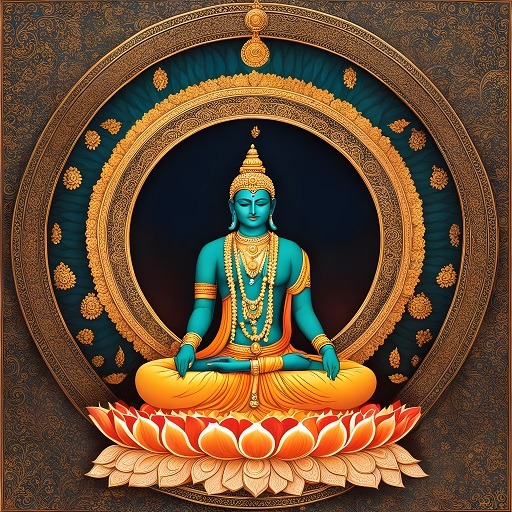
View On WordPress
#Belief system in Sanatana Dharma#Cosmic harmony in Hinduism#Diverse deities in Hindu pantheon#Eternal truths in Hinduism#Hindu scriptures and beliefs#Karma and Dharma philosophy#Path to self-realization#Pursuit of moksha#Tantric practices and insights#Unity and interconnectedness
1 note
·
View note
Text



"Tantra is the science of transforming ordinary lovers into soul mates. And that is the grandeur of Tantra. It can transform the whole earth; it can transform each couple into soul mates." -Rajneesh
Yab-Yum "father-mother" Talon Abraxas
Yab-Yum (Tibetan meaning "father-mother") is a common symbol in the Buddhist art of India, Bhutan, Nepal and Tibet representing the male deity in sexual union with his female consort. Often the male deity is sitting in lotus position while his consort is sitting in his lap.
The symbolism is associated with Anuttarayoga tantra and, while there are various interpretations of the symbolism in the twilight language, the male figure is usually linked to compassion (karuṇā) and skillful means (upāya-kauśalya), while the female partner to 'insight' (prajñā).
The symbolism of union and sexual polarity is a central teaching Tantric Buddhism, especially in Tibet. The union is realised by the practitioner as a mystical experience within one's own body.
Yab-yum is generally understood to represent the primordial (or mystical) union of wisdom and compassion. In Buddhism the masculine form is active, representing the compassion and skillful means (upaya) that have to be developed in order to reach enlightenment. The feminine form is passive and represents wisdom (prajna), which is also necessary to enlightenment. United, the figures symbolize the union necessary to overcome the veils of Maya, the false duality of object and subject.
Yab-yum may also be represented through the aniconic signification of yantra and mandala. In Tibetan Buddhism, the same ideas are to be found concerning the bell and the dorje, which, like the yab-yum, symbolize the dualism that must be exceeded. The sacred Tantric practice leads to rapid development of mind by using the experience of bliss, non-duality, and ecstasy while in communion with one's consort.
44 notes
·
View notes
Text
𝐌𝐀𝐆𝐈𝐂𝐊𝐀𝐋 𝐀𝐒𝐓𝐄𝐑𝐎𝐈𝐃𝐒
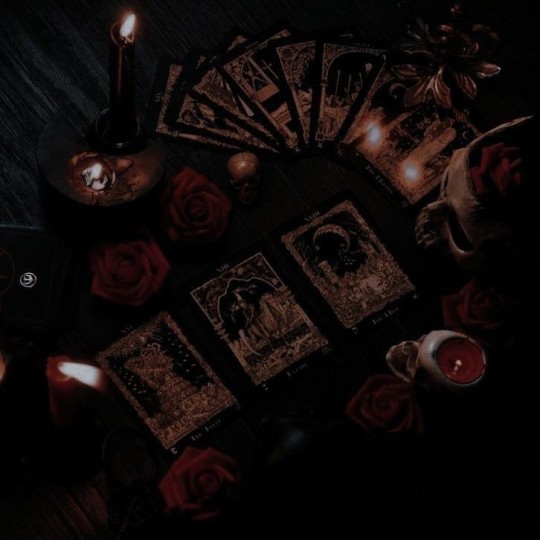
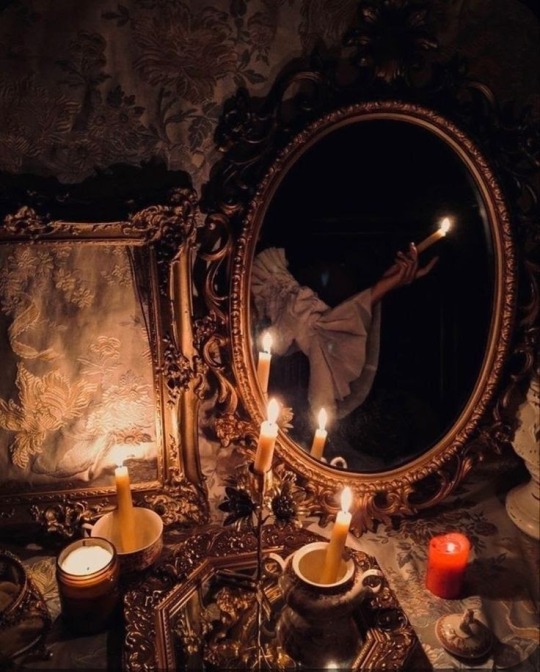
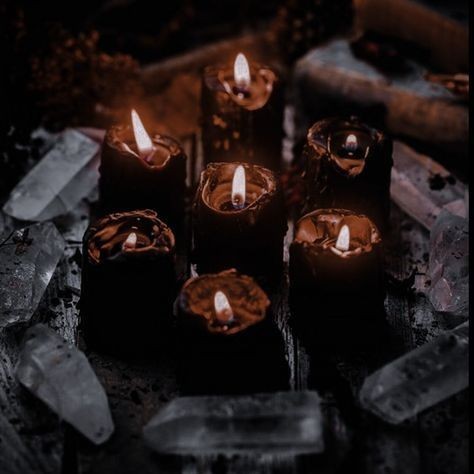

Erda (894) ~ Past life recollection, South node energy, the ability to see into the past. This asteroid is similar to Urda (167).
Circe (34) ~ Your magickal gifts, Where/How you isolate yourself to practice your craft. Your striking, and special qaulities. (This can show working with plants, and herbs!; I have this in my 12H, and it sits to close to my ASC.)
Magion (2696) ~ The Magician/ Mystic; One who knows how to work with magic. Depending of the sign can show what type of magic you're skilled in. For those of you who practice any kind of magic consistently, I recommend checking the Persona Chart for this asteroid!
Celestia (10) ~ Heavenly one, connection to the cosmos / most high. Angel energy, and may have the gift of divine insight, and cosmic downloads. Keeper of cosmic wisdom. This asteroid somewhat reminds of the asteroid Akasha (5881).
Merlin (2598) ~ The Echantress/ Magician; Occcult Wisdom, Warrior energy, alchemy, majestic energies
Hypnos (14827) ~ The gift of dream sight, prophetic messages through dreams, the ability to Astral project. Dream magic/ Astral projection may be a very strong gift for you. If you have this in the 1st house please protect your energy. Most of the time these natives have very strong dreams. (I have this in my 1st house, and my dreams have always been very intense, and prophetic.)
Copy & Paste⤵
894,34,2696,10,2598,14827,167,5881

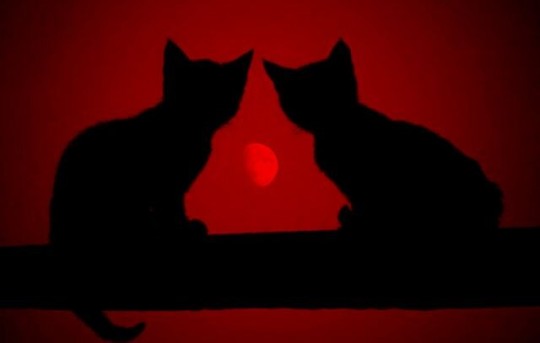



Cassandra (114) ~ The Seer; This asteroid represents intuitive abilities, and the gift of foresight. The saying for this asteroid is literally, "The one who goes unheard". Cassandra was a Greek priestess who worked under the God "Apollo". She had the ability to provide prophetic messages. This was very useful in Greek history. If you have this in the 1st or 10th house this could manifest as you having very strong and potent prophetic abilities but people may not believe you until it happens.
Telephus (5264) ~ Telepathy, the gift to connect to others minds, and break into the subconscious or conscious mind of others. The ability to know what others are thinking. Gifts with telekinesis. This can be a very great gift to have!
Anubis (1912)~ Necromancer, this reminds me of the death card. The gift of possessing very ancient knowledge of alchemy, you could easily work with chaos or dark energy. Transmuter energy.
Copy & Paste⤵
114,5264,1912



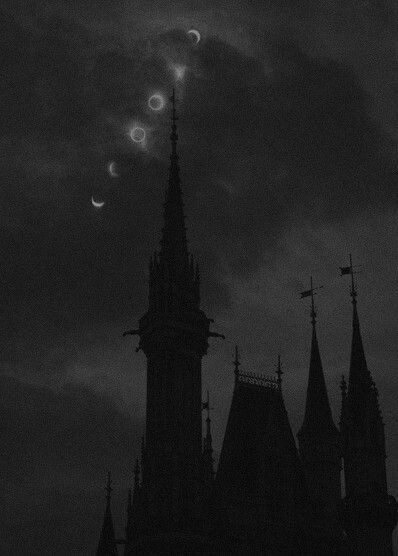

Pythia (432) ~ Oracle of Delphi; The Oracle/ High Priestess "one who can channel the word of god" The messenger. Divination, prophecy, & magic.
Medea (212) ~ The princess, The wise one; one who can work with herbs, holistic healing.(I've first hand seen a very powerful herbalist with this in their 10H! It was in pisces btw!/ conjunct their North Node!)
Deucalion (53311) ~ Divine Intervention, death, The passage of renewal, magic, manifestation.
Aesculapia (1027) ~ The Shaman, The Healers Journey; Herbs, healing, restoration, health, mystical, holistic healing, Naturalness.
Kaali (4227) ~ The Dark Mother; Kundalini Energy, The Cosmic Mother, One who see's all. Tantric and taboo energy, the height of transmutation energy, "The Left Hand Path", enchanting and creation energy (Love this asteroid so much, Kaali was one of the first dieties to reach put to me, and I have this ☌ my North Node!)
Copy & Paste ⤵
432,212,53311,1027,4227
Asteria (658) ~ Magick, Oracles of the Night, Stars, Practicioners, starseeds, vivid dreams, astrology, prophecy, dream Magick.
Sibyl (168) ~ A Woman Who Has The Gift Of Foresight; prophetess, witches, messengers of the gods. Oracles, divine messages, foretelling.
Hekate (100) ~ The Triple Goddess; dreams, cancerian energy, moon, ghost, keys, opening new doors, mediumship, Magick, dark goddess, the dark mother.
Black Moon Lilith (H21) ~ Magical, Dark Magick, chaos Magick, sex and tantric Magick, hypnotic energy, psychicism, shamanism.
Hades (h41) ~ The occult, darker magic, banishment Magick, the ability to transmute negative energy, karma.
Urania (30) ~ Astrology, muse of the stars, astronomy
(I have this is in my 10th/ ☌ Mc, and ⚹ ♆ 🤭)
Copy & Paste ⤵
658,168,100,H21,H41,30



If you guys enjoyed this, Lmk if you want to see a Part 2! Happy Spooky Szn! 🔮🪄 Til' next time....𝓴𝓲𝓼𝓼𝓮𝓼 𝔁𝔁

𝕯𝖎𝖛𝖎𝖓𝖊 𝕯𝖊'𝕷𝖚𝖝𝖊
ℭ𝔥𝔢𝔠𝔨 𝔗𝔥𝔦𝔰 𝔒𝔲𝔱!

©𝓟𝓻𝓮𝓽𝓽𝔂 𝓒𝓪𝓻𝓪𝓶𝓮𝓵
#Spotify#astro community#astrology posts#pretty caramel#astro notes#astro observations#astro posts#natal chart#astro placements#asteroid#asteroids#astro#astrology#astro thoughts#astrology content#astrology community#astrology blog#astro content#astro chart#astrology chart#astro natal#birth chart#astro blog#asteroid observations#asteroid astrology#astroblr#divine deluxee#caramel de'luxe#ascendant#astrology tumblr
780 notes
·
View notes
Text
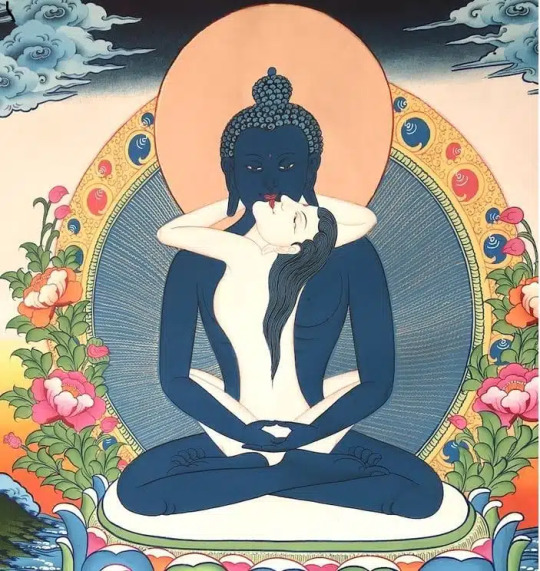
the yab yum (depicted above) represents the primordial union of compassion (male) and insight (female). the union of the two is necessary to attain enlightenment.
in tantra, it is also called the lotus pose and is a very popular tantric sex position that is alleged to produce heightened pleasure for both parties as it aligns all 7 chakras and creates increased awareness. tantric practitioners experience prolonged states of orgasm and this position is said to aid in it (along with other individual meditative practices)
122 notes
·
View notes
Text
Buddhism? In my TLT?
It's more likely than you think!
The influence of Christianity is so obvious in TLT that is almost goes without discussion. Jod obviously took the Catholic education he got probably from colonial missionaries and used it as a template for his empire. But what's up with the Buddhist influence? Why literally name the process to lyctorhood after The Eightfold Path? (Did Jod even name this process?) There's seemingly no overlap from what I can tell, so why name one of the most sacred and secretive processes of your religion AND empire after one of the most famous and sacred spiritual practices in the world (i.e. Jod's cultural sphere)?
There is a connection between the process of lyctorhoodization and tantric Buddhism: the merging of physical with spiritual, the spiritual consumption of another to be closer to or achieve enlightenment, and the power dynamics at play. But that seems like an English Major Stretch™️ and not overt in the text.
Any one else confused by this? Any white knights with insight?
Do you think "the Eightfold path" is a purposeful (either in universe or narratively) allusion to Buddhism?
69 notes
·
View notes
Text
The notion that nothing can oppose the divine if all things are divine necessitates sensate experience as a pathway to liberation and even divine self-realisation, and with that there can be no argument in principle against religious and magical eroticism as a path to liberation. And what then about the erotic import associated with the practice of Satanism is not divine liberation? If the universe and the body are identical but for different angles, and only fetters truly separate them, and if the goal is to weave them together by removing obstacles and limits, then it is a simple matter to realise that social norms are a large part of those limits and obstacles, or reinforce many manner, and then you will have antinomianism. And then, we will recognise the storming of heaven as a way of conceptualising that “weaving” in satanic and egoist terms: a destructive act or insurrection that breaches the barriers and breaks the limits that seem to wrap around us in our embodied state. If Tantric “cosmification” (in David Gordon White's terms at least) is what Gregory Shaw calls deification (in Platonist theurgical terms), and if that means the body of the yogi should not be seen a miniature cosmos but instead as a “self-magnifying self” that has become fully realised as “the magnificent universe”, then ours is a barbarian business, to open the vaults of the universe as the act of apotheosis.
It's actually pretty hilarious to find connections to whatever I was cooking early last year to what Shaw tries to talk about in the second chapter of Hellenic Tantra (which I would say is so far insightful but in a very flawed way).
Unfortunately the connection to theurgy seems limited to the base principle that theurgy seeks embodied divinity and establishes the basis of that in the descent of the macrocosmic divine into the microcosmic human matter. But, there are transgressive possibilities nonetheless.
#left hand path#satanism#tantric hinduism#theurgy#neoplatonism#satanic paganism#gothic insurrection#egoism
9 notes
·
View notes
Text
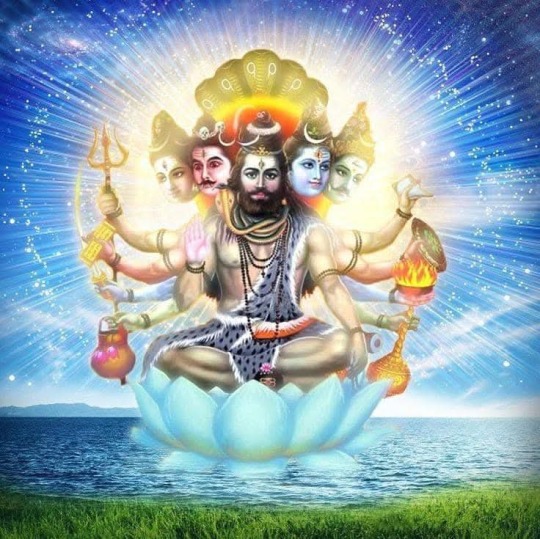
My Venus-Malavya Yoga, conjoined with Rahu and Jupiter (guru chandal), I see as strongly related to this unique journey I've taken spiritually.
Venus, the planet of beauty, creativity, and pleasure, relational matters, aesthetics.. combined with the wisdom, higher learning, and expansiveness of Jupiter, signifed an incredible, insatiable drive towards understanding divine truths through personal experience, ripe sensuality and aesthetics.
With Rahu, the shadow planet of desire, obsession, unconventional/taboo fixation in the mix, there is a profound yearning to transcend limitations of the material world and immerse deeply into the mystical realms - I have guru chandal in both my d1 and d60 chart, in d60, it is so close, it is within the exact same degree and devata.
With jupiter as my atmakaraka, it is at the forefront of my desires - it signifies a formidable counter to rahus cravings, intensity and potential for unchecked hunger and delusion..
Jupiter as it is, the only planet truly, naturally equipped with the capacity for understanding and being prepared to handle the shenanigans of Rahu.
This planetary alignment is indicative of one who will seek to experience and integrate transcendental states through rasa, the deep emotional currents, impressions, in which flow through day to day life, art, and spiritual pursuits.
The influence of Rahu, when paired with Jupiter’s expansive nature, has the ability to lead to a deeper, more intense pursuit of spiritual knowledge, pushing an individual into altered states of consciousness, transgression; often through practices that involve sensory perception and aesthetic experience - through carnal pleasure and the sensorial/conceptual marriage of Venusian domains, when paired with Venus.
(Ketu is also in my 1st house in the d1, d9 and d10 chart)
This powerful conjunction aligns well with the strive to encounter transcendental states, through meditation, profound aesthetic experiences and their interplay.
Rasa, the essence of flavor or emotional experience, plays a central role in Kashmir Shaivism, where it acts as a medium through which one tastes the divine.
Naturally, durations of deep, ecstatic connection to art, music, sensuality, nature etc have allowed me to enter into higher states of consciousness, where the boundaries between self and the universe dissolve, and I experience the ultimate oneness of existence.
In the tantric tradition, such experiences are seen as gateways to direct communion with the divine, where every sensation is a reflection of Shiva’s infinite presence.
The Guru Chandal Yoga aspect, while for many, is very challenging, I believe opened me up to deeper spiritual insights by pushing me to question the nature of knowledge, conventional, "renunciate", spiritual pursuits and reality period.
This relationship of my astrological blueprint and spiritual path, highlights the flavor of Venus-Malavya Yoga conjunction with Rahu and Jupiter - driving me toward profound transcendence through the sensory and mystical experiences central to Kashmir Shaivism.
The notion of Rasa, the essence of aesthetic experience, as a means to liberation.. struck me heavily, early on in exploring shaivism.
It connected in me.. that, in moments of pure aesthetic experience, I was not just observing beauty—I was becoming it, dissolving into it, touching something beyond the world of form.. and this was something I could hone and study, guiding me to understanding metaphysical truths.
I always knew beauty itself could be a path to liberation, while so many religions and systems see it as a distraction, or even a reason to punish/for suffering.
This is what initially drew me to the teachings of Abhinavagupta, whose work on aesthetics, sensory enjoyment, spirituality and their synthesis, opened a new door.
The Kashmir shaivite perspective on Rasa and spanda were the two initial draws, with svatantrya being the deal closer.
I was captivated by Abhinavagupta’s understanding that the experience of beauty, especially through art, is a streamline to supreme truth.
The notion that the world; the evil, the good, the bad and the transcendent could be perfectly reconciled and merged seamlessly- that the world was not as something separate from the divine, but as an expression of it - that we could one day realize everything is perfect, as I have experienced in my transcendent states before.. felt not only real based on my experience, but what most spirituality was missing.. while also, being the ultimate OBJECTIVE and scenario of metaphysical conquests..
In this philosophy, there is no distinction between the sacred and the mundane; everything is a manifestation of the divine play.
Abhinavagupta’s teachings on tantra helped reinforce and outline extensively, what I had initially dreamt and had been rebuked, punished, and ostracized for believing.
#esoteric#occult#hinduism#tantra#shiva#goddess#shakti#bhairava#spirituality#sanatanadharma#vedic astrology#astrology#religion vedic#venus#jupiter#rahu ketu#guru chandal#rasa
5 notes
·
View notes
Text
Tantric massage London
Exploring Tantric Massage in London: A Path to Relaxation and Rejuvenation
In the bustling heart of London, amidst the fast-paced lifestyle and constant demands, a unique form of relaxation has been gaining attention: tantric massage. Rooted in ancient practices, tantric massage offers a holistic approach to healing, combining physical, mental, and spiritual well-being. This article delves into the essence of tantric massage in London, its benefits, and what makes it a sought-after experience for many.
What is Tantric Massage?
Tantric massage London is more than a physical therapy; it’s an art form inspired by the ancient traditions of Tantra, which emphasizes connection, mindfulness, and energy flow. This practice involves slow, deliberate movements combined with rhythmic breathing to awaken the body’s energy centers, or chakras. Unlike conventional massages, tantric massage focuses on harmonizing the mind, body, and soul.
In London, practitioners tailor their sessions to provide a safe and nurturing environment, ensuring clients feel comfortable as they embark on this transformative journey.
The Appeal of Tantric Massage in London
London, a melting pot of cultures and lifestyles, is home to diverse wellness practices. Tantric massage has become particularly appealing for its ability to:
Relieve Stress and Tension: The calming techniques used in tantric massage help release pent-up stress, promoting relaxation.
Enhance Emotional Well-being: This massage focuses on emotional release, helping individuals reconnect with their inner selves and restore balance.
Improve Energy Flow: By unblocking energy pathways, tantric massage enhances vitality and fosters a sense of rejuvenation.
Strengthen Intimacy and Connection: Couples often turn to tantric massage to deepen their bond and cultivate intimacy through shared experiences.
Finding the Right Tantric Massage Studio in London
Choosing the right practitioner is key to experiencing the full benefits of tantric massage. When searching for a studio in London:
Research the Practitioner’s Credentials: Ensure they have professional training in tantric practices.
Look for Reviews: Genuine testimonials provide insights into the quality of service.
Consider the Ambiance: A serene and private setting enhances the overall experience.
Discuss Boundaries: Communication is crucial to establish trust and ensure a comfortable session.
A Typical Tantric Massage Session
While each tantric massage session is unique, it generally includes:
Introduction and Grounding: The practitioner discusses the process, sets intentions, and creates a safe space for the client.
Breathwork and Meditation: Guided breathing helps the client relax and become present in the moment.
Full-Body Massage: Using warm oils, the practitioner employs gentle, flowing strokes to stimulate energy flow.
Focus on Chakras: Specific attention is given to energy centers to unblock stagnant energy and promote balance.
Who Can Benefit from Tantric Massage?
Tantric massage is for anyone seeking:
Stress relief
Emotional healing
Enhanced energy levels
A deeper understanding of their body and mind connection
Whether you're a busy professional navigating London's hectic lifestyle or someone looking to explore new dimensions of relaxation, tantric massage can offer a rejuvenating experience.
Ethical Considerations
It’s essential to approach tantric massage with the right mindset. This practice is not solely about physical relaxation; it’s a sacred art aimed at holistic well-being. Reputable practitioners in London emphasize respect, consent, and professionalism throughout the process.
Final Thoughts
Tantric massage in London offers a sanctuary for those seeking to reconnect with themselves and find balance amid life’s chaos. By combining ancient wisdom with modern techniques, it creates a deeply enriching experience that nurtures the body, mind, and spirit.
For those curious to explore this transformative practice, London’s diverse wellness community provides ample opportunities to discover the profound benefits of tantric massage. Take the leap, and you might find a new path to tranquility and self-discovery.
2 notes
·
View notes
Text
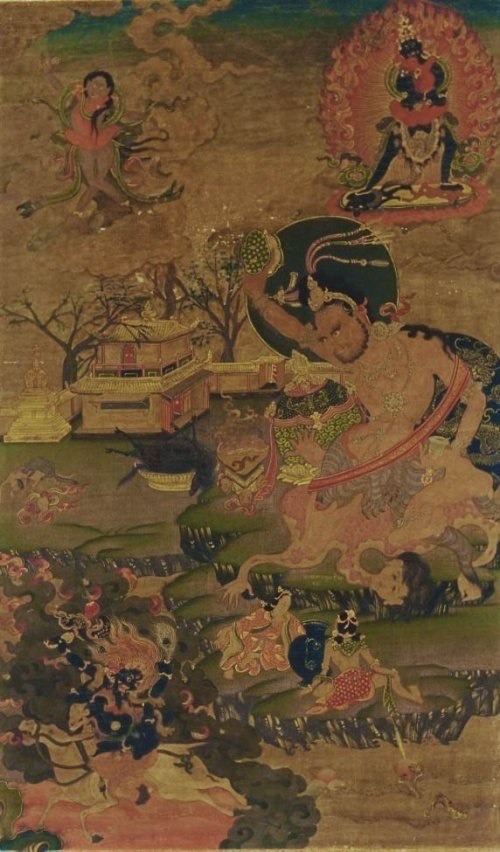
Mahasiddha Damarupa: The Drummer's Melody of Enlightenment
Mahasiddha Damarupa; The mahasiddha Damarupa (the Drummer) was a student of Kanha (the Black One) who in turn was a student of Virupa (Ugly One). Damarupa was famous for carrying a double sided hand drum where ever he went and is said to have visited the twenty-four sacred tantric power places and the thirty-four sacred grounds. He subdued a non-Buddhist King and stopped the sacrifice of animals in the kingdom. The king took up Buddhism, renounced his kingdom and practiced a path free from extremes and became known as Avadhutipa. As the mahasiddha Avadhutipa, the former king transmitted the Margapala (Path Together with the Result) teachings to the Pandita Gayadhara.
"Seeing the excellent meaning of reality,
By releasing from worldly practice
And remaining in the conduct of accomplishment;
To Damarupa I bow." (Chogyal Pagpa).
Mahasiddha Damarupa, known as "the Drummer," stands as a luminous figure in the rich tapestry of tantric Buddhism. A direct disciple of Kanha, who, in turn, studied under the eminent Virupa, Damarupa's life and teachings resonate through the annals of spiritual history.
Damarupa's distinctive presence was marked by his unwavering companionship with a double-sided hand drum, a symbolic manifestation of his commitment to the tantric path. His spiritual journey took him to the twenty-four sacred tantric power places and the thirty-four sacred grounds, symbolizing a profound connection with the sacred geography of the tantric tradition.
One of Damarupa's most legendary feats was his encounter with a non-Buddhist King. Through his mastery of tantric practices, Damarupa not only subdued the king but also intervened to halt the sacrificial rituals involving animals within the kingdom. The transformative impact of this encounter led the king to embrace Buddhism, relinquish his kingdom, and embark on a path free from extremes.
Renamed Avadhutipa, the former king transcended his worldly identity and dedicated himself to a life of spiritual pursuit. Avadhutipa, now a mahasiddha in his own right, became a transmitter of the Margapala teachings— the "Path Together with the Result." His disciple, the Pandita Gayadhara, benefited from this transmission, highlighting the cascading effect of wisdom and compassion through the generations.
The verses of Chogyal Pagpa encapsulate the essence of Damarupa's realization. The homage pays tribute to Damarupa's profound insight into the excellent meaning of reality. It acknowledges Damarupa's ability to transcend mere worldly practices and embrace the conduct of accomplishment, a testament to his advanced spiritual attainments.
Damarupa's legacy extends beyond his mastery of tantric rituals; it encompasses his role as a catalyst for societal transformation. His intervention in the non-Buddhist kingdom not only quelled the ritualistic sacrifice of animals but also initiated a profound shift in the ruler's life. Avadhutipa's subsequent renunciation and transmission of teachings exemplify the transformative power embedded in the tantric tradition.
In the melody of Damarupa's drum, we find echoes of enlightenment, resonating across sacred landscapes and transformative encounters. His story serves as an inspiration for seekers on the tantric path, emphasizing the potential for profound change through the marriage of wisdom, compassion, and skillful means. Mahasiddha Damarupa, the Drummer, continues to beat the rhythm of enlightenment, inviting all to join the dance of realization on the path of liberation.
6 notes
·
View notes
Text
Vedic Astrology and its Significance to overcome obstacles in life
Are your life's difficulties keeping you back? Our comprehensive Vedic astrology services specialize in removing impediments and paving the path for a brighter future. We provide a wide range of solutions to your problems by combining ancient wisdom and current insights.
Vedic astrology- a tool for self-discovery, identifying life patterns, and karmic lessons. It also discusses relationship compatibility and synastry analysis, as well as career guidance and financial prospects based on planetary placements. Vedic astrology can help individuals understand their potential, desires, and challenges through their birth charts.
Vedic astrology - an ancient Indian system that connects celestial bodies with human lives and destinies. It covers the Vedic Zodiac, Nakshatras, and the significance of the nine planets (Navagrahas) in Vedic astrology, their characteristics, symbolism, and impact on different zodiac signs and houses.
Our astrology solutions are tailored to individual needs, offering a range of remedies from Vedic methods to tantric practices. Our holistic approach aims to bring balance and harmony to life, addressing horoscope concerns and specific issues. Our experts provide insights and recommendations, recommending suitable Pariharam and homam rituals to counteract planetary influences and promote positive transformations.
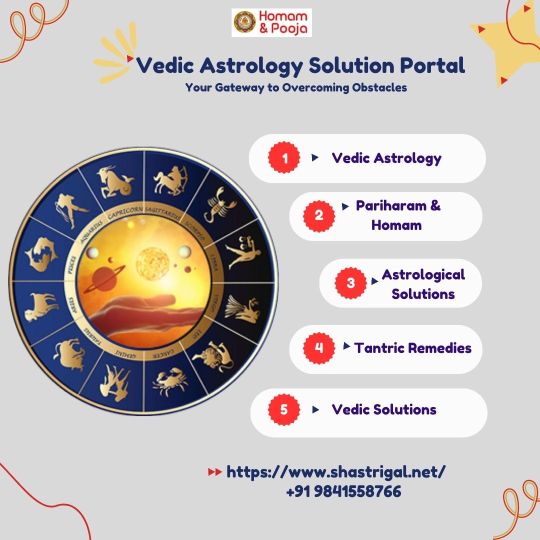
2 notes
·
View notes
Text


Tantra is the science of transforming ordinary lovers into soul mates. And that is the grandeur of Tantra. It can transform the whole earth; it can transform each couple into soul mates. -Rajneesh
Yab-Yum Talon Abraxas
Yab-Yum (Tibetan meaning "father-mother") is a common symbol in the Buddhist art of India, Bhutan, Nepal and Tibet representing the male deity in sexual union with his female consort. Often the male deity is sitting in lotus position while his consort is sitting in his lap.
The symbolism is associated with Anuttarayoga tantra and, while there are various interpretations of the symbolism in the twilight language, the male figure is usually linked to compassion (karuṇā) and skillful means (upāya-kauśalya), while the female partner to 'insight' (prajñā).
The symbolism of union and sexual polarity is a central teaching Tantric Buddhism, especially in Tibet. The union is realised by the practitioner as a mystical experience within one's own body.
Yab-yum is generally understood to represent the primordial (or mystical) union of wisdom and compassion. In Buddhism the masculine form is active, representing the compassion and skillful means (upaya) that have to be developed in order to reach enlightenment. The feminine form is passive and represents wisdom (prajna), which is also necessary to enlightenment. United, the figures symbolize the union necessary to overcome the veils of Maya, the false duality of object and subject.
Yab-yum may also be represented through the aniconic signification of yantra and mandala. In Tibetan Buddhism, the same ideas are to be found concerning the bell and the dorje, which, like the yab-yum, symbolize the dualism that must be exceeded. The sacred Tantric practice leads to rapid development of mind by using the experience of bliss, non-duality, andecstasy while in communion with one's consort.
119 notes
·
View notes
Text
Exploring Modern Spirituality: 21st Century Tantra at Clear Sky Center
In today’s fast-paced world, many seekers are looking for deeper connection, awareness, and balance in their lives. Tantra, an ancient spiritual tradition, offers tools for this—but how does it evolve in a modern context? Clear Sky Center invites you to explore this question through its transformative event, 21st Century Tantra.
What is 21st Century Tantra?
Unlike the often misunderstood mainstream portrayal, Tantra is not merely about sensual practices. At its core, it is a profound path to awaken consciousness and integrate all aspects of life. The 21st Century Tantra retreat at Clear Sky takes these timeless teachings and adapts them to suit the challenges and dynamics of contemporary living.
Participants will learn how to apply tantric principles to everyday experiences—relationships, work, and spiritual practice—leading to greater self-awareness and fulfillment.

Why Join This Retreat?
Hosted in the peaceful and supportive environment of Clear Sky Meditation & Study Center, the retreat offers a unique opportunity to go deep into your personal transformation. Through guided meditations, movement practices, and insightful teachings, attendees will:
Discover how modern tantra supports conscious living
Learn tools for emotional integration and energy awareness
Cultivate presence in both solitude and connection
Engage with a like-minded community on a similar path
Whether you are new to tantra or seeking to deepen your understanding, this retreat is designed to be accessible and relevant to your personal journey.
A Space for Awakening
Clear Sky Center is known for its commitment to offering genuine and grounded meditation retreats in Canada. With its serene natural setting and experienced teachers, it provides the ideal space to step back from daily distractions and reconnect with your inner life.
If you're ready to explore 21st Century Tantra as a practical spiritual path, learn more and register here.
0 notes
Text
What the Symbols in Oṁ (ॐ) Really Mean

🌑 Two Sides of the Same Sound
We’ve written two meditations on Oṁ (ॐ), one from the heart, one from the symbol.
🩷 AUM: The Sacred Yes Beneath It All explores Oṁ as an intimate, whispered yes, a soft return to essence, felt more than analysed.
💜 What follows below offers the deeper roots: the states of consciousness, the Tantric pronunciation as Om̐ (pronounced: om-ng), the swara (swuh-rah), the bindu (bin-doo), the sound’s ascent, and how all this quietly echoes through modern science.
Together, they form a whole:
Feeling and form. Breath and bindu.
A sound that holds you from both within and beyond.
🌕 What the Symbols in Oṁ (ॐ) Really Mean
⟡ The Sound of All Things & the Silence Beneath ⟡
You’ve seen it before. Etched into temples. Hanging on yoga studio walls. Printed on T-shirts, stitched into leggings, painted on the backs of eyelids in deep meditation:
ॐ — sometimes written as AUM, or Oṁ.
But what is it? A symbol? A sound? A concept?
The truth is: It’s a vibration. A reminder. A portal.
In this post, we explore the meaning of this sacred syllable: its origins, sounds, shapes, states, and the subtle science it quietly harmonises with. From the Upaniṣads (oo-puh-nee-shuds) to neuroscience, from bindu to brainwaves, we follow the hum back to source.
📜 Where Did AUM/Oṁ Come From?
The syllable Oṁ has its roots in the Vedas (veh-dahs), India’s oldest spiritual texts, composed over 3,000 years ago. It first appears in the Ṛg Veda, hinted at as a sacred utterance, the seed of all mantras.
By the time of the Upaniṣads (c. 800–400 BCE), Oṁ had become the sound-form of the Absolute - brahman (bruh-muhn), the formless source behind all phenomena. The Māṇḍūkya Upaniṣad (maan-doo-kya oo-puh-nee-shud), just twelve verses long, is entirely devoted to decoding this sound as the totality of consciousness.
The written symbol ॐ emerged later with the Devanāgarī script, its elegant curves and dot becoming a visual mantra in themselves.
In Tantric (tan-trik) practice (c. 500 CE onward), Oṁ became a tool of vibration. Chanted as Om̐ (om-ng) - a nasalised hum - it was used to activate the subtle body, awaken kuṇḍalinī (koon-da-lee-nee), and dissolve the boundaries between self and source.
Today, research into frequency medicine, neurology, and bioacoustics reveals surprising parallels to these ancient insights. Science catching up to what yogis felt in their bones.
🕉 Oṁ: More Than a Symbol
The Māṇḍūkya Upaniṣad teaches that Oṁ contains everything:
Waking (jāgrat, jaa-grut)
Dreaming (svapna, svup-nuh)
Deep sleep (suṣupti, soo-shoop-tee)
And the stillness that holds them all — turīya (too-ree-yuh)
It is the praṇava (pruh-nuh-vuh) — “that which hums forth” — the primal vibration of becoming.
In Tantra, Oṁ isn’t broken into parts. It is Om̐ — one complete, nasalised vibration, pronounced like "om-ng", not ending on the lips but reverberating through the skull, sinuses, and crown.
🔘 Anusvāra — The Dot that Hums the Universe
That final “ng” sound comes from the anusvāra (ं) — a dot placed above the syllable in Sanskrit
(pronounced: uh-noos-vā-rah). It’s subtle, but essential.
Anusvāra means “after-sound.” In Oṁ, it marks the final resonance, not a hard “m,” but a nasal hum that carries the vibration upward and inward. This is the bindu (bin-doo) in sonic form, the droplet from which the cosmos ripples out.
You don’t just hear it, you feel it. In the teeth. The brow. The bones of the face. In Tantrik cosmology, this bindu is the silent seed of sound, the point before creation, the stillness at the edge of becoming.
Modern studies show that chanting Oṁ with anusvāra:
Increases nitric oxide in the nasal cavity (boosting immunity and blood flow)
Stimulates the vagus nerve, improving relaxation and emotional regulation
Activates gamma brainwaves, linked to insight, unity states, and nondual awareness
(Kalyani et al., 2011)
In other words:
What hums from the heart changes the mind.
🔍 The Symbol of Oṁ: A Map of Consciousness
Each part of the ॐ symbol is a map, not just calligraphy, but cosmology.
➊ Lower curve – A (अ)
Waking state (jāgrat, jaa-grut) — the outer world, the physical, the known.
➋ Middle curve – U (उ)
Dreaming (svapna, svup-nuh) — the mind’s inner landscapes.
➌ Upper curve – M (म)
Deep sleep (suṣupti, soo-shoop-tee) — rest, stillness, unknowing.
➍ The dot – Turiya (तुरीय)
The fourth — not a state, but awareness itself (too-ree-yuh). Beyond activity, beyond time.
➎ The arc between – Māyā (illusion)
Māyā (maa-yah) is the veil that seems to separate the dot from the rest, but doesn’t truly divide.
In neuroscience, these states mirror what we call default mode network activity, non-REM sleep, and open monitoring meditation. The dot (turīya) aligns with the quiet integration seen in deep meditative absorption and non-dual states.
The yogic map and the brain’s map whisper the same thing:
Stillness isn’t absence. It’s the field beneath change.
🎶 The Swara of Oṁ — Not Just a Sound, But a Tone
In Sanskrit, swara (स्वर) means tone, pitch, breath: the vowel’s soul (swuh-rah).
Oṁ is not flat. It moves.
In Vedic recitation, it’s voiced with a rising swara, lifting from belly to brow, reflecting an ascent of awareness.
In Tantric chanting, the emphasis shifts from pitch to resonance. The sound Om̐ ends in a nasal “ng”, like in French bon or Portuguese pão. The vibration is felt inside, rising through the skull and into the crown (brāhmarandhra, brah-ma-run-dhra).
Modern acoustic research shows that:
Ascending tones + nasal hums
→ Activate the parasympathetic nervous system
→ Enhance sinus resonance, improving oxygenation
→ Encourage theta and gamma brainwaves, linked to insight and inner coherence
The ancients weren’t guessing.
They were listening.
✨ AUM vs Oṁ: What’s the Difference?

Contemporary studies show that both forms offer therapeutic benefits, but nasalised Oṁ (Om̐) reaches deeper. It activates limbic pathways, regulates the vagus nerve, and harmonises pineal function through sonic vibration.
The anusvāra makes the difference.
It is the resonance after the name.
The hum beneath the world.
🌀 How to Chant Oṁ the Tantric Way
Try this subtle practice:
Sit comfortably. Soften your jaw.
Inhale gently through the nose.
Exhale with the sound “Oṁ”, letting it sound like “Om-ng.”
Let the vibration rise: belly → chest → skull.
After the sound fades, pause.
This silence is turiya.
Repeat 3–9 times.
Rest in the shimmer.
The silence after the sound is not absence.
It’s the presence behind all things.
🌑 Why It Matters
We live in an age of symbols detached from their source.
Oṁ has been sold as style, stamped as product, reduced to logo.
But Oṁ is not an aesthetic.
It’s an invitation.
A remembering through sound.
When chanted with care, especially in its Tantric, resonant Om̐ form, Oṁ becomes both medicine and mirror.
It tunes your nervous system to stillness.
It reminds the body what truth feels like.
You were never separate.
You are the hum beneath the world.
#Oṁ#AUM#OmSymbolMeaning#TantricYoga#MantraScience#Swara#NādaYoga#MandukyaUpanishad#SoundTherapy#Turiya#Bindu#SacredSound#VagusNerve#NeuroscienceAndYoga#YogaHistory#RootsofYoga#Remembering
0 notes
Text
A Guide to Deepen Intimacy with Tantric Meditation for Couples
Most people misunderstand what Tantra is; it’s a significant way of interacting with life itself. By joining mindfulness, you learn to be aware of the moment and see things in life with a broader sense than before.
The main aim of tantric meditation for couples is to grow and improve together. Partners are dedicated to their relationship while still improving their own qualities. Based on a tantric approach, you are led to understand the purest and most open love between partners in terms of their spirits and bodies.
How Tantric Meditation Improves a Couple’s Connection?
In Tantric meditation, touching sensually, looking deeply at your partner and aligning your energy help couples feel relaxed together. They form a powerful bond that goes much deeper than the body and affects the soul.
In tantra, you discover that sexual and spiritual energy come from the same place. The purpose of Tantric meditation isn’t to achieve an orgasm but to focus on your body and enjoy the most intense sensations. Generally, couples touch each other slowly and calmly to enhance their closeness and keep the experience going.
A Simple Tantric Meditation Practice for Partners
A tantric practice is a step-by-step process meant to prepare your mind and body. Envisioning love as a bright light and breath as flowing water gradually makes couples feel that energy. They begin to think more carefully about their touch, words and actions toward each other. Gradually, visualisation allows people to heal from past problems and grow closer.
Find a spot where you and your partner don’t have to worry about interruptions.
Sit down so your knees are touching and you face each other.
Be sure to begin your meditation by taking three deep and soothing breaths.
Look into one another’s eyes with no negative thoughts.
Hold hands to the chest and aim to breathe in together.
Embrace, kiss or take your partner’s hand for a second.
Tell them what you appreciate most in your relationship and partner.
Set an intention for your relationship's growth.
Benefits of regular tantric practice
Shamanic ceremonies and the traditions of Tibetan monks have contributed to spiritual growth in retreats for generations. A tantric massage retreat doesn’t have to last for years. A few days of reflection in a quiet place can teach you valuable things about yourself. Yoga sessions are suitable for both singles and couples, as well as beginners and advanced yogis.
Increased Intimacy
Using Tantric meditation methods can foster a stronger bond between partners at the spiritual level. When we breathe correctly, stay focused and exchange energy, we form a better basis for true intimacy.
Improved Sensuality
Tantra doesn’t focus solely on achieving orgasm, but perhaps as a result, sex often becomes more vibrant through the activation of buried sexual energy. Many couples notice that their sexual will and sexual desire increased after practising Tantra.
Deeper Self-Awareness
Self-awareness comes from any meditation, yet tantric meditation pays special attention to our bond with our partners. During the couple's tantric massage, you will gain knowledge on how to blend your energies with your companion to create unity.
The Transformative Power of Retreat Experiences
Tantric massage uses breathing, touching and the invitation of energy to help the chakras of the body become active. At such a retreat, people learn to practice real tantric massage with their partners. This form of healing encourages a sense of peace and bonding.
It’s through removing yourself from the same daily habits that you can gain new insights. According to studies, after two years, most couples still care for each other but have lost their initial feelings of falling in love. Tantra emphasises that loving someone requires a conscious effort and regular practice.
Spiritual energy and its influence on life
Many personal matters involving emotions, physical well-being or sex come from a lack of flow in energy. Tantra pays special attention to this energy. It provides not only actions, but also knowledge that helps people better understand themselves. For many people, tantra provides answers that they have sought for a long time.
Tantra doesn’t offer quick fixes. Instead, it offers clarity. It teaches people how to tune in, not numb out. For couples, this awareness is a game-changer. When both partners understand the flow of their energy, they can support each other’s growth genuinely.
Conclusion
Tantra is not about chasing passion. It is about creating it intentionally, mindfully, and consistently. Whether through tantric meditation for couples or through a shared experience at a tantric massage retreat, couples can redefine what intimacy means.
They begin to discover each other again, not just with their hands but with their hearts. Couples' tantric massage opens the gateway to authentic sensuality, one that is kind, present, and profound.
Those seeking to transform their relationship and themselves will find Tantra a meaningful, sacred path. Start your journey now. Embodied Awakening Academy welcomes all couples ready to rediscover their love through ancient, mindful practices.

1 note
·
View note
Text
youtube
Sneak Peek Sxr #137 | When Women Need A Pattern Interrupt From The Daily Grind Sometimes the most powerful reason to seek healing isn't a specific trauma - it's simply needing a pattern interrupt from the daily grind. In this insightful clip from Sex Reimagined Podcast, hosts Leah Piper and Dr. Willow Brown discuss why many women attend tantric and Taoist healing retreats. When you feel that something's got to give, when you can't keep going through the same motions day after day, immersing yourself in a supportive community can create the transformation you're seeking. This "pattern interrupt" allows women to emerge renewed, transformed, and awakened in profound ways. The complete conversation (https://youtu.be/Y-AObpLKQyI) explores ancient tantric and Taoist practices including sacred spot massage, vulva witnessing, jade egg work, and sound healing that help women reconnect with their divine feminine energy through sisterhood and ritual. Whether you're carrying specific wounds around trust with other women, mother-daughter dynamics, or sexual trauma, or simply feeling disconnected from your pleasure and power, these practices offer a path to wholeness. Watch the full episode for a deep dive into what really happens when women gather for healing: https://youtu.be/Y-AObpLKQyI #PatternInterrupt #WomensHealingRetreat #DivineFeminine #TantricPractices #SisterhoodHealing #FeminineEnergy #TransformationalJourney #WomensCircles #DailyGrind #SacredFeminine 🫶 Goddess Greece Retreat | https://ift.tt/khNWv4S 🫶 Questions about the Retreat? Email [email protected] _________________________________ 🖥️ SxR Youtube Channel | https://www.youtube.com/sexreimagined | Subscribe, Like, Comment 🌐Website: https://ift.tt/xIO5wH1 🌐Leah Piper: https://ift.tt/itZ3s6P 🌐 Dr. Willow: https://ift.tt/XH0gmlT https://www.youtube.com/watch?v=yOWGzrDiGPU via Sex Reimagined https://www.youtube.com/channel/UCxlndEltmjcpHqQB5SB1hSg May 01, 2025 at 03:01PM
#sxreimagined#sxreimaginedpodcast#relationshipcoaching#relationshipadvice#personaldevelopment#tantrateachings#intimacycoaching#Youtube
0 notes
Text
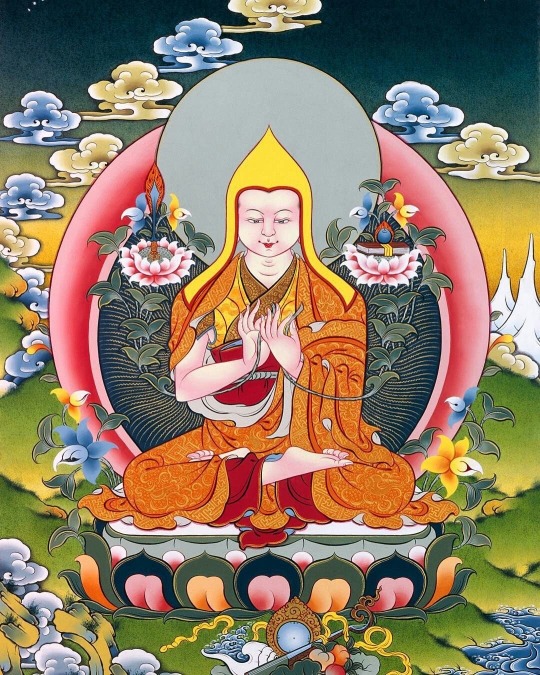
The Transformative Journey: Exploring the Six Yogas of Naropa
Introduction:
The Six Yogas of Naropa, as elucidated by Lama Tsongkhapa and Shamarpa Chokyi Wangchuk, offer a profound path to spiritual awakening. These teachings guide practitioners through a systematic progression of practices, incorporating physical exercises, visualizations, and meditation techniques. This article explores the key components of both texts, providing insight into the transformative journey of the Six Yogas of Naropa.
I. Six Yogas of Naropa by Lama Tsongkhapa:
1.1 Special Tantric Preliminaries: Paying homage to the Guru and engaging in tantric preliminaries set the foundation. The practitioner meditates on Vajrasattva with consort, reciting mantras and visualizing blessings that merge with their body, speech, and mind.
1.2 Guru Yoga: Continuing with Guru yoga, the practitioner merges with the Guru, completing the preliminaries and preparing for the actual tantric path.
1.3 Actual Tantric Path - Wrathful Heruka Chakrasamvara: Generating oneself as the wrathful Heruka Chakrasamvara with the consort Kalarati marks the initiation into the tantric path. The completion stage involves visualizing the mandala deity and realizing the inherent emptiness of the body.
1.4 Six Physical Exercises in Completion Stage: Stabilizing the mind in the view of the body's inherent emptiness is achieved through six physical exercises, including specific breathing techniques and physical yoga postures.
1.5 Inner Heat Yoga (Tummo): Tummo, or inner heat yoga, plays a crucial role in drawing vital energies into the central channel. Lama Tsongkhapa details techniques for causing energies to enter, abide, and dissolve within the central channel, inducing the four blisses.
1.6 Illusory Body and Clear Light Yogas: Meditating on the illusory body during waking, sleeping, and the clear light of death, practitioners cultivate realization of emptiness, viewing all forms as deity manifestations and experiencing them as illusions and great bliss.
1.7 Dream Yoga and Bardo Yogas: Dream yoga involves four trainings, including recognizing dreams, controlling dream content, overcoming fear, and meditating on emptiness within dreams. Bardo yogas transform manifestations in the bardo experience into supporting and supported mandalas.
1.8 Yoga of Consciousness Transference (Phowa): The final yoga, Phowa, involves the forceful projection of consciousness into another body, utilizing mantra syllables and control of vital energies.
II. Six Dharmas of Naropa by Shamarpa Chokyi Wangchuk:
2.1 Preparation Stage: Similar to Lama Tsongkhapa's preliminaries, Shamarpa pays homage and takes refuge with the deity Sahaja, setting the stage for the main practice.
2.2 Main Practice: The main practice is categorized into stages such as the Yoga of Candali, training in impure and pure illusory body, dream yoga, luminosity or clear light practice, and the spontaneous liberation of the bardo.
2.3 Conclusion Stage: The conclusion stage involves the Yoga of Consciousness Transference (Phowa) with three parts: superior transference into luminosity, medium transference as an illusory body, and lesser transference as a deity's body.
Conclusion:
Both Lama Tsongkhapa and Shamarpa Chokyi Wangchuk's teachings on the Six Yogas of Naropa offer a comprehensive guide to spiritual transformation. The systematic progression through tantric preliminaries, physical exercises, and advanced meditation techniques leads practitioners to profound realizations of emptiness and the experience of blissful states. Embracing these teachings opens the door to a transformative journey toward spiritual awakening and enlightenment.
2 notes
·
View notes